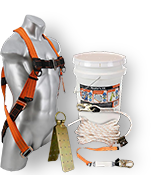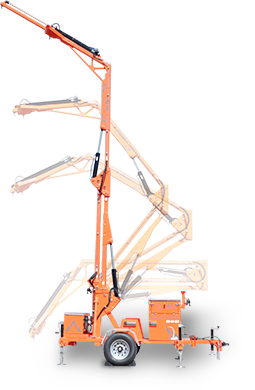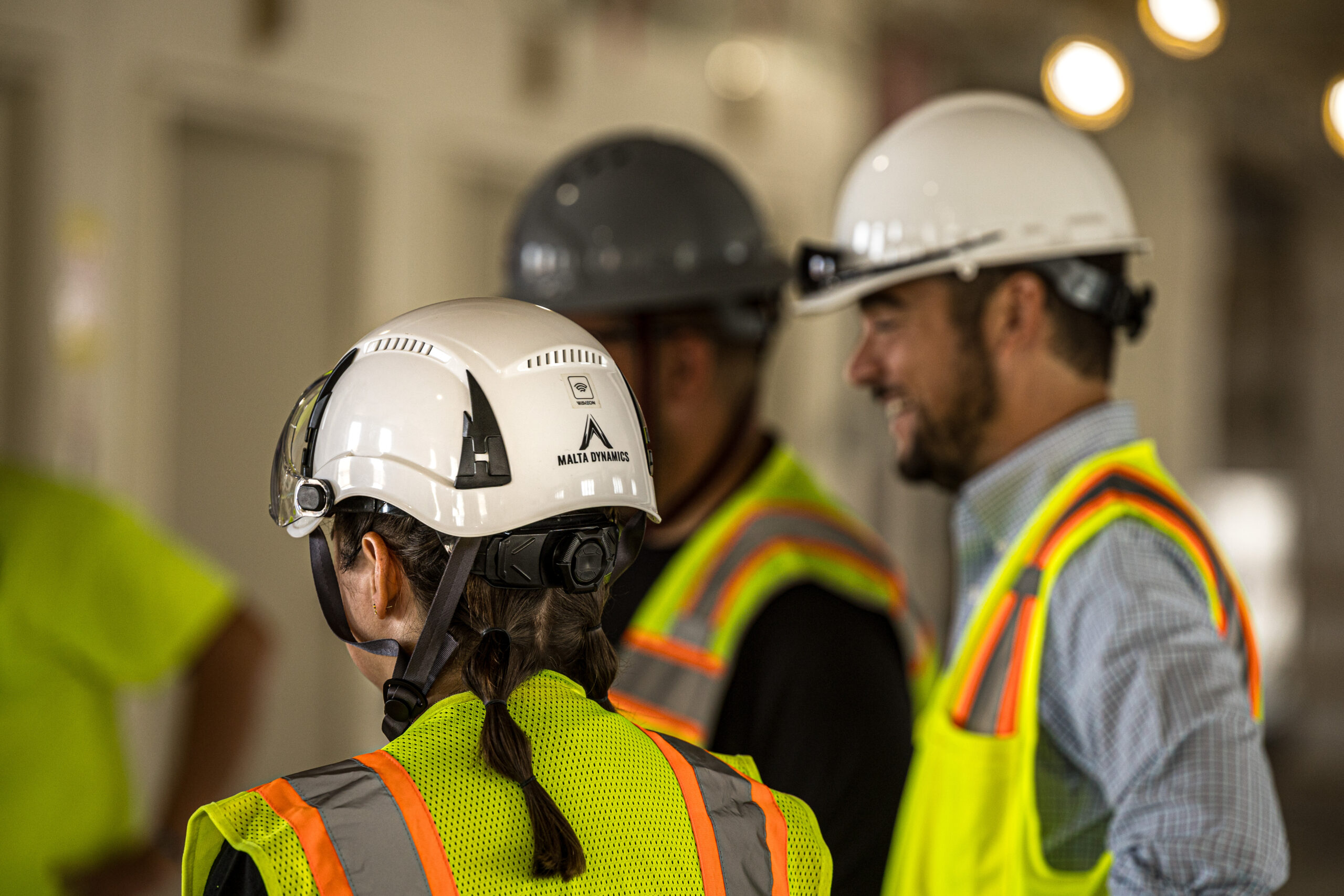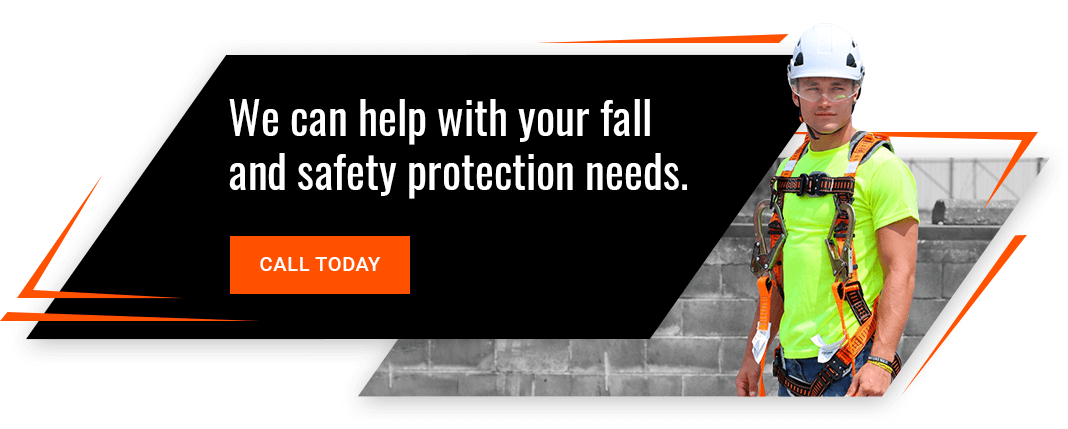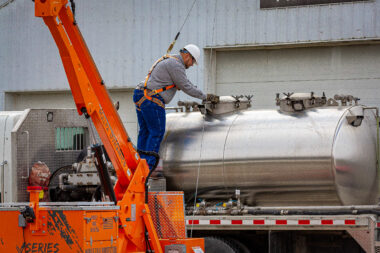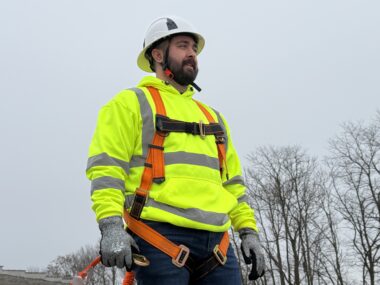When is Fall Protection Required in the Construction Industry?

Keeping workers safe on construction sites means making fall protection a priority. In this industry, tasks often involve working at heights, climbing scaffolding, or being near dangerous equipment—situations where the risk of falling is real. That’s why it’s so important to know when fall protection is required to help prevent serious injuries. By following OSHA regulations, companies can protect their workers and avoid injury or legal trouble. In this blog, we’ll break down the specific fall protection requirements for construction, point out common hazards, and share tips to stay compliant with safety standards.
What is Fall Protection?
Fall protection includes the tools, equipment, and practices that keep workers safe by either preventing potential fall hazards or reducing the risk of injury if a fall happens. It’s especially important in the construction industry, where jobs often involve working on elevated surfaces, overhead platforms, or low-slope roofs. According to OSHA, fall protection systems—like guardrails, safety nets, or personal fall arrest systems—are required for any construction work done at heights of 6 feet or more.
Why is Fall Protection Important in Construction?
Falls are the top cause of fatalities in construction, in fact, approximately 300 fatal and 20,000 nonfatal fall-related injuries per year (NIOSH Science Blog), showing just how important it is to have strong workplace safety measures. Key situations where fall prevention is needed include:
- Working on scaffolding, low-slope roofs, or ladders.
- Installing structural elements or working near hazards like unprotected edges or fragile surfaces.
- Performing tasks where workers are exposed to fall distances of more than 6 feet.
By following fall protection standards, construction companies can protect their workers, prevent serious injuries, and steer clear of costly penalties from OSHA inspectors.
OSHA Compliance and Requirements
The Occupational and Health Administration is a federal agency that sets and enforces workplace safety and health standards in the United States. It has some of the strictest safety standards for the construction industry, and for good reason—worker safety is a top priority. Here are the key requirements:
- Fall Protection Systems: Guardrails, safety nets, and personal fall arrest systems are a must for any work done at heights of 6 feet or more.
- Scaffolding Safety: Scaffolding needs to have guardrails and toe boards to keep workers secure.
- Ladder Use: If a ladder is 24 feet or taller, fall protection is required.
- Training and Inspections: Employers must assign a “competent person” to inspect equipment and train workers on spotting hazards and using fall protection systems correctly.
By following these guidelines, companies can create safer worksites and reduce the risk of accidents.
Keeping Workers Safe: Industry-Specific Requirements
Construction sites present a variety of hazards, and ensuring worker safety means tailoring precautions to specific tasks. From sloped roofs to towering steel beams, certain situations demand extra care and specialized equipment. Here’s how to address key risks:
Roofing
Working on sloped surfaces or near unprotected edges increases the chance of accidents. Whether installing shingles or repairing flat roofs, guardrail systems, safety nets, or anchor points are essential to keep workers secure.
Steel Erection
Connecting beams or decking at great heights is inherently dangerous. For tasks performed 15 feet or higher, personal safety gear, like fall arrest systems, is critical, and required, to minimize the risk of falling.
Scaffolding and Elevated Platforms
Scaffolding and overhead workspaces are staples in construction but can become hazardous without proper safeguards. Using secure platforms, guardrails, and protective systems ensures these areas remain safe.
Working on Sloped Roofs
Low-slope and pitched roofs bring additional challenges, particularly near edges. Anchoring systems, safety nets, and harnesses are vital tools for preventing injuries during these tasks.
Framing and Structural Work
Balancing on beams or open floors during framing requires special attention. Safety nets and harnesses provide the protection needed to reduce risks and help workers focus on their jobs with confidence.
Addressing the unique safety needs of each task not only prevents injuries but also fosters a culture of care and responsibility on construction sites. By making safety measures a priority, companies can protect their teams and maintain compliance with industry regulations.
How to Develop a Fall Protection Plan
A thorough safety plan tailored to the construction industry is crucial for preventing accidents and keeping teams protected. By addressing site-specific risks and implementing practical steps, companies can create a safer work environment. Here’s how to get started:
- Identify Specific Risks
Assess the site to pinpoint hazards like unprotected edges, elevated work areas, and proximity to dangerous equipment. Understanding these risks is the foundation of an effective plan. - Choose the Right Gear
Select protective mechanisms—such as guardrails, safety net systems, or harnesses—designed for the specific tasks workers will perform. Having the right equipment ensures maximum safety. - Provide Thorough Training
Appoint a qualified person to train workers on safety protocols and proper use of equipment. Clear, hands-on instruction helps everyone stay prepared and confident. - Adapt to Changing Conditions
Construction sites evolve, and so should your safety plan. Regularly update it to address potential hazards and changing environments as the project progresses.
By focusing on these steps, companies can reduce the risk of injuries while fostering a culture of safety and accountability on every site.
How Malta Dynamics Supports Construction Safety
Malta Dynamics is dedicated to keeping construction workers safe with high-quality, reliable safety equipment. Their range of products is specifically designed to meet the demands of construction sites, offering effective solutions for various tasks:
- Personal Fall Arrest Systems: Ideal for jobs like framing, roofing, or working on scaffolding, these systems ensure workers stay secure while tackling elevated tasks.
- Safety Nets and Guardrails: Essential for protecting against falls from overhead platforms or elevated workstations, creating a safer environment for everyone on-site.
- Mobile Fall Protection: Perfect for dynamic and rapidly changing construction sites, these mobile solutions offer flexibility without compromising safety.
Securing Safety and Compliance on Every Job Site
With durable, compliant products, Malta Dynamics helps companies not only meet safety regulations but also protect their workforce and maintain a strong safety culture.
Ensuring worker safety on construction sites is both a legal responsibility and a moral obligation, especially in an industry where fall hazards are a common concern. Recognizing when safety measures are needed, customizing solutions for specific tasks, and putting detailed plans in place are key steps to protecting workers and staying compliant with regulations.
Malta Dynamics provides the tools and expertise construction companies need to implement effective fall protection standards. With a wide range of reliable safety solutions, they help businesses safeguard their teams and meet compliance requirements. Ready to enhance safety on your site? Explore their fall protection equipment and systems or reach out for customized solutions designed for your construction needs.

